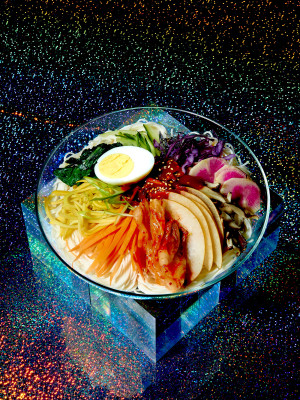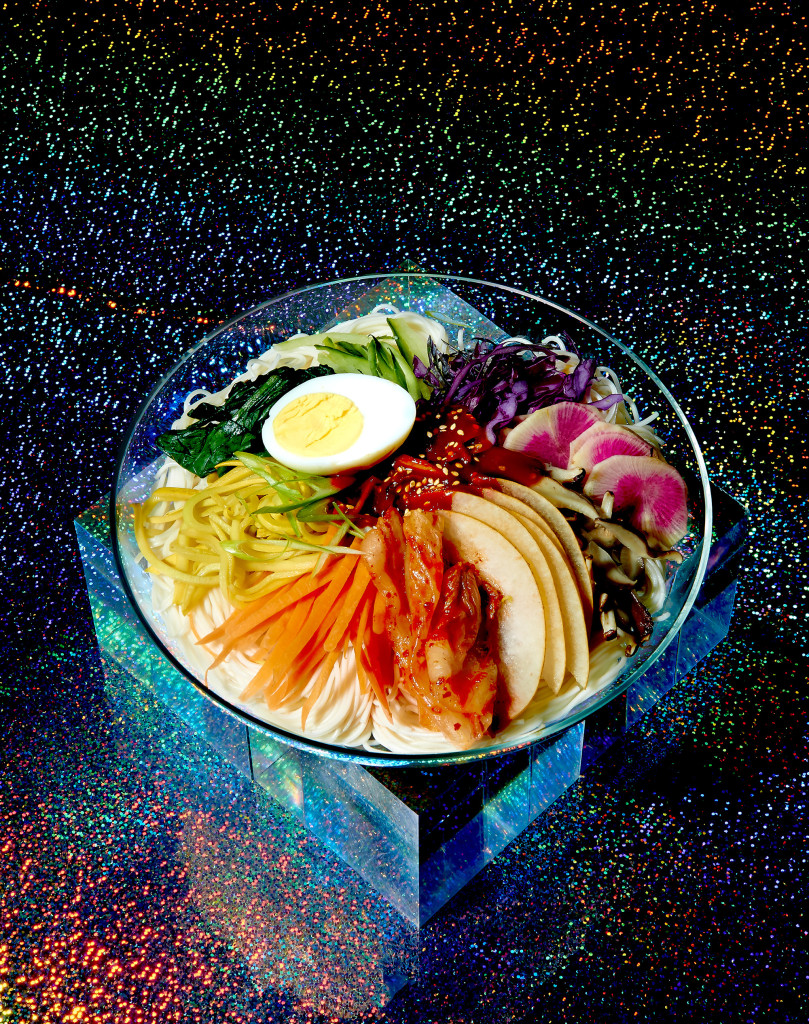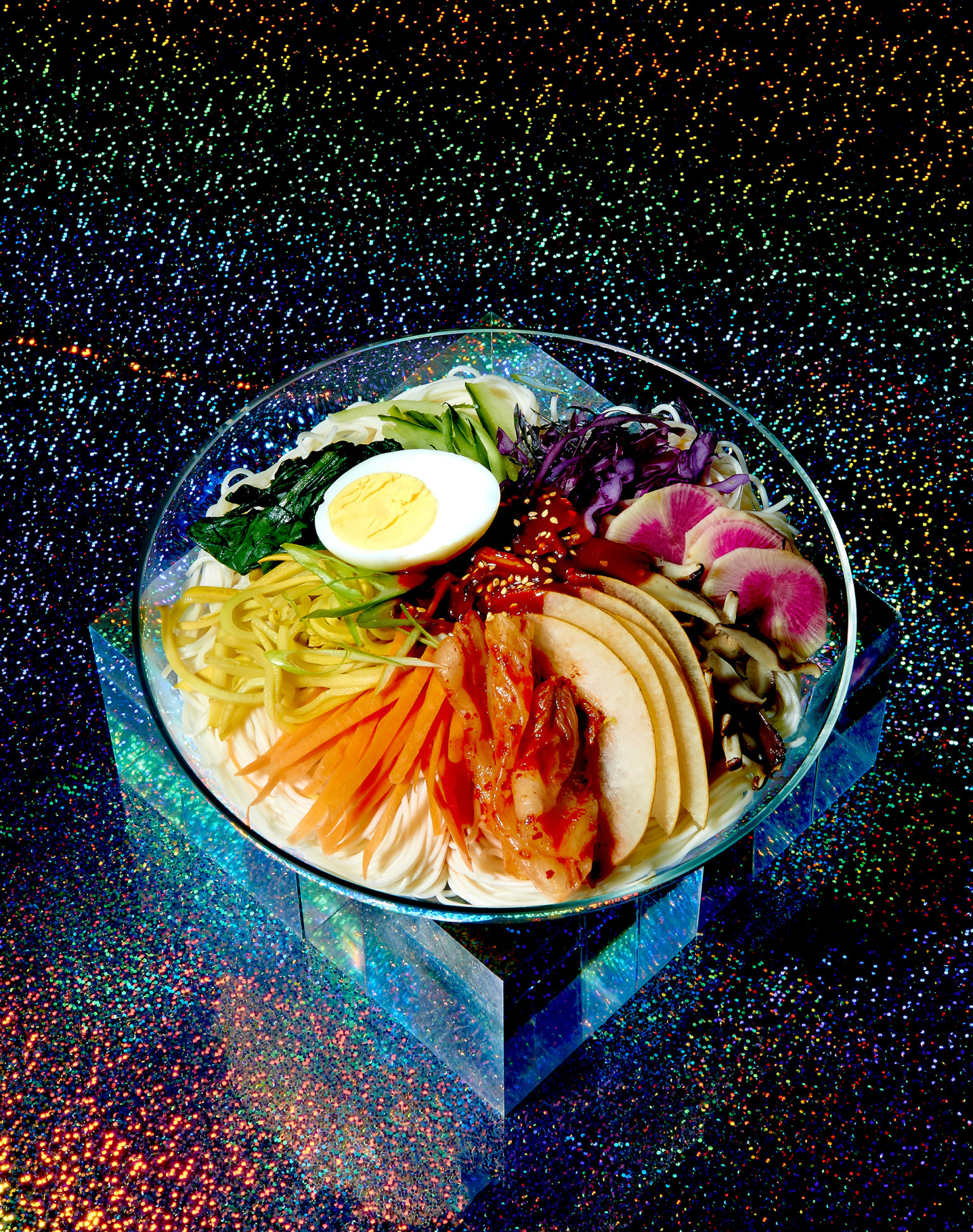Bibim Guksu
Mains from Issue 7 – Summer 2015 – Spectrum
The only kind of super bowl we’re interested in.
Gather Journal Bibim Guksu
Bibim Guksu
The traditional Korean dish can be appreciated year round, of course, but in the warmer months the cold, spicy noodles feel especially fitting. For optimal enjoyment, take care to artfully arrange your egg and vegetable toppings (a beautiful plate beckons that much more) and don’t skimp on the gochujang; as flavor goes, its role is pivotal.
serves 4
- ¾ lb somen noodles
- 4 Tbsp olive oil
- 5 oz spinach
- 9 oz shiitake mushroom, thinly sliced
- 1 medium yellow squash, julienned
- 1 cup red cabbage, thinly sliced
- 1 carrot, julienned
- 1 Asian pear, sliced
- 1 cucumber, julienned
- 2 scallions, thinly sliced
- 1 small watermelon radish, thinly sliced
- 1 cup kimchi
- 4 hard-boiled eggs, peeled and halved
- gochujang sauce (recipe at right)
- ¼ cup toasted sesame seeds, divided
-
1
Cook somen noodles according to package directions, and then drain, rinse with cold water, and drain again. Cover with plastic wrap until ready for use.
-
2
Heat 1 Tbsp oil over medium-high heat. Add spinach and sauté until just wilted. Set aside on a plate. Add 2 Tbsp oil to the skillet and cook mushrooms until tender. Set aside with spinach. With the remaining Tbsp oil, sauté squash until tender and set aside as well.
-
3
Arrange the kimchee, cooked and fresh vegetables, and eggs on top of noodles. Serve with sauce and remaining sesame seeds.
Gochujang Sauce: Mix together ⅓ cup gochujang paste; 2 Tbsp toasted sesame oil; 1 Tbsp low-sodium soy sauce; 1 tsp unseasoned rice vinegar; 1 Tbsp honey; 1 small garlic clove, very finely chopped; and 1 Tbsp toasted sesame seeds.

